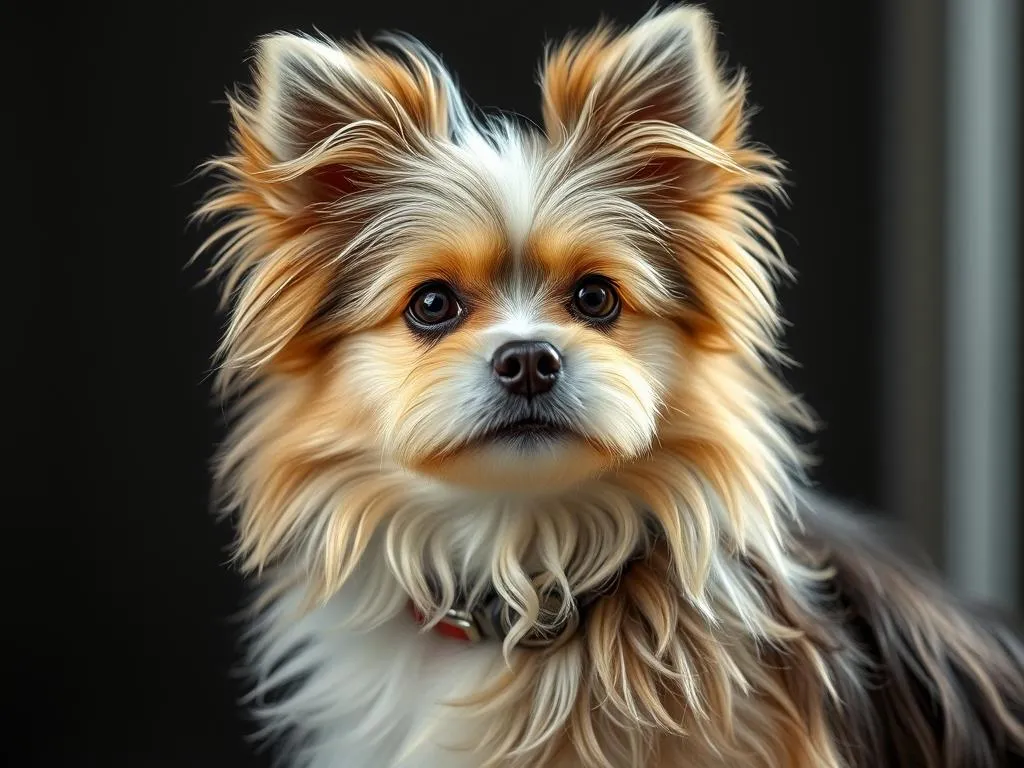
Introduction
The Weeranian, a delightful blend of the West Highland White Terrier (Westie) and the Pomeranian, is a charming mixed breed that has gained popularity among dog lovers. This hybrid breed inherits the best traits from both parent breeds, making it a fascinating option for families and individuals alike. Understanding mixed breeds like the Weeranian is essential, as it helps potential owners appreciate their unique characteristics, care needs, and behaviors. In this article, we’ll dive deep into various aspects of the Weeranian, from its origins and physical traits to health considerations and training tips.
Understanding the Weeranian Breed
Origin of the Weeranian
To truly appreciate the Weeranian, one must first understand its parent breeds. The West Highland White Terrier, commonly known as the Westie, hails from Scotland and was originally bred for hunting small game. This breed is known for its cheerful demeanor and distinctive white coat, which has become a hallmark of the breed.
On the other hand, the Pomeranian, originating from the Pomerania region in Central Europe, is known for its fluffy coat and lively personality. This breed has a rich history, having been bred from larger Spitz-type dogs. The Pomeranian’s small size and big personality have made it a favored companion dog.
The Weeranian combines the best features of these two breeds, resulting in a hybrid that is not only adorable but also full of energy and affection.
Physical Characteristics
The Weeranian typically exhibits a small to medium size, usually weighing between 10 to 20 pounds. Its height can range from 10 to 15 inches at the shoulder. This breed boasts a well-proportioned body, often with a slightly rounded head and expressive eyes that reflect its playful nature.
In terms of coat type, Weeranians can inherit a variety of textures and colors. Some may have the long, fluffy coat of a Pomeranian, while others might sport the shorter, denser fur of a Westie. Common colors include white, cream, black, and tan, often with various markings that add to their unique appearance.
Distinctive features of the Weeranian include its erect ears—common in both parent breeds—and a lively tail that usually curls up over its back, further enhancing its adorable look.
Temperament and Behavior
The Weeranian is known for its friendly and outgoing personality. This breed is typically affectionate, playful, and eager to please, making it an excellent companion for families and individuals alike. Their sociable nature allows them to get along well with children, other pets, and even strangers, provided they receive proper socialization from an early age.
However, it is crucial to note that Weeranians can inherit some stubbornness from their Pomeranian lineage, which may require consistent training and patience. They are intelligent dogs, often eager to learn new tricks and commands, making them highly trainable with the right approach.
Health Considerations
Common Health Issues
Like all dog breeds, Weeranians can be prone to specific health issues inherited from their parent breeds. Some of the common health concerns include:
- Patellar Luxation: A condition where the kneecap dislocates, leading to pain and difficulty in movement.
- Hip Dysplasia: A genetic condition where the hip joint doesn’t fit properly into the hip socket, potentially leading to arthritis.
- Dental Issues: Small breeds like the Weeranian are more prone to dental problems, making regular dental care essential.
Regular health screenings and check-ups with a veterinarian are crucial for early detection and prevention of these issues.
Lifespan and Care
The average lifespan of a Weeranian ranges from 12 to 16 years, which is typical for small breeds. To ensure a long and healthy life, routine veterinary care, including vaccinations, dental check-ups, and parasite prevention, is vital. Responsible breeding practices can also significantly influence the overall health and lifespan of Weeranians.
Grooming and Maintenance
Coat Care
Grooming is an essential part of caring for a Weeranian, especially because of its mixed coat type. Depending on the coat’s length and texture, grooming frequency may vary.
- Longer coats may require brushing two to three times a week to prevent matting.
- Shorter coats can be easier to maintain with less frequent brushing, perhaps once a week.
Using the right grooming tools is crucial. A slicker brush and a comb will help manage tangles and keep the coat healthy.
Bathing and Skin Care
Bathing should be done as needed, typically every 4 to 6 weeks, depending on the dog’s activity level and coat type. It’s essential to use a gentle dog shampoo to avoid skin irritation.
For skin care, regular inspections for irritations or parasites are advisable, and owners should consider using a quality conditioner to maintain coat health, particularly for longer-haired Weeranians.
Nail Trimming and Dental Hygiene
Nail trimming is vital for maintaining foot health. Regularly trimming nails every 3 to 4 weeks can prevent discomfort and possible injury.
Dental hygiene is another critical aspect of a Weeranian’s care. Owners should brush their dog’s teeth at least two to three times a week and consider dental chews to help maintain oral health.
Training the Weeranian
Basic Training Techniques
Training a Weeranian begins with early socialization, exposing them to different environments, people, and other pets. This helps develop a well-rounded temperament.
Effective training methods include:
- Positive Reinforcement: Rewarding good behavior with treats or praises.
- Consistency: Using the same commands and signals to avoid confusion.
- Short Sessions: Keeping training sessions brief but frequent to maintain focus and interest.
Behavioral Issues and Solutions
Common behavioral problems in Weeranians may include barking, separation anxiety, and stubbornness.
To address these issues:
– Implement consistent training routines.
– Provide plenty of mental and physical stimulation.
– Create a safe space for your Weeranian to retreat when feeling anxious.
Advanced Training and Activities
Weeranians thrive on activities that engage both their mind and body. Consider:
- Agility Training: Setting up a small course in your backyard can be a fun way to train.
- Obedience Classes: These can help reinforce commands and socialization.
- Interactive Toys: Puzzle toys can keep a Weeranian entertained and mentally stimulated.
Nutrition and Diet
Feeding Guidelines
Maintaining a balanced diet is crucial for the health of a Weeranian. Recommended diet types include:
- High-quality dry kibble specifically formulated for small breeds.
- Wet food for added moisture and palatability.
- Raw diets can also be considered, but should be done under veterinary guidance.
Portion control is essential, as small breeds can easily become overweight. Feeding schedules should typically involve two meals per day.
Special Dietary Needs
Small breed dogs like the Weeranian often have different nutritional needs compared to larger breeds. Considerations include:
- Higher protein content to support their active lifestyle.
- Supplements like omega fatty acids for skin and coat health.
- Regular monitoring of weight to adjust diet as needed.
Living with a Weeranian
Ideal Living Environment
Weeranians adapt well to different living situations, whether in apartments or homes with yards. However, they do thrive in environments where they receive plenty of attention and interaction.
Outdoor spaces need not be extensive, but access to a secure area for play is beneficial.
Exercise Needs
Daily exercise is crucial to keep a Weeranian healthy and happy. Recommended activities include:
- Daily walks: Aim for at least 30 minutes of walking each day.
- Playtime: Engaging in fetch or tug-of-war can burn off excess energy.
- Dog parks: Allowing them to socialize and run with other dogs is great for their physical and mental health.
Socialization and Interaction
Socializing a Weeranian is vital for its development. Engage in regular playdates with other dogs, and consider group training classes to expose them to new experiences and people.
Creating opportunities for interaction not only enriches their lives but also helps prevent behavioral issues.
Conclusion
The Weeranian is a delightful mix of the Westie and Pomeranian, bringing together the best traits of both breeds. Their affectionate nature, playful demeanor, and adaptability make them a wonderful addition to any family. However, it’s essential to understand their unique needs in terms of health, grooming, and training. Owning a Weeranian can be a joyful and rewarding experience, filled with love and companionship. Whether you’re considering adopting or purchasing one, knowing what to expect will help ensure a happy and fulfilling relationship with this charming breed.
Frequently Asked Questions (FAQs)
What is the average cost of a Weeranian?
The average cost of a Weeranian can vary significantly based on factors such as breeder reputation and location. On average, expect to pay between $500 to $1,500.
How do I find a reputable breeder?
To find a reputable breeder, look for those who are members of breed clubs, conduct health screenings for their breeding stock, and allow you to meet the puppy’s parents.
Are Weeranians good for first-time dog owners?
Yes, Weeranians can be excellent companions for first-time dog owners, provided they are willing to invest time in training and socialization.
What should I know before getting a Weeranian?
Before getting a Weeranian, consider your lifestyle and living situation. Ensure you can provide the necessary exercise, grooming, and socialization they require to thrive as happy and healthy pets.









